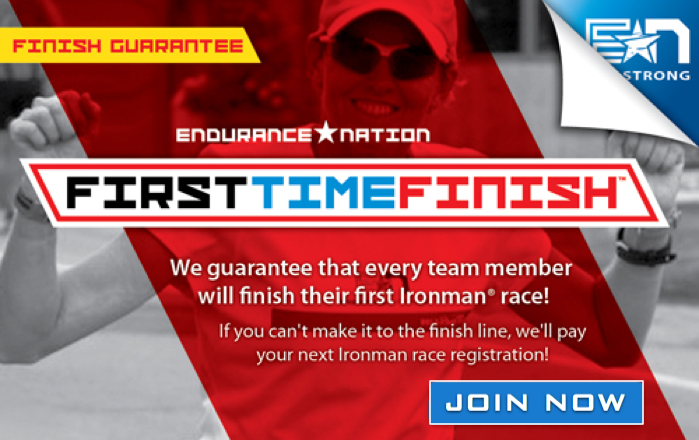The Long Course Triathlon Execution Seminar, Lesson #2 — The Swim and Transitions
In this lesson, we will cover:
- Ironman® Swim Overview
- Swim Pacing and Tips
- Ironman® Transitions Overview
- Transition Tips
We will give you the guidance you need to a smooth, efficient swim, as well as smooth, fast, and efficient transitions.
Rich & Patrick
Part 1: Ironman® Swim Overview
The Ironman® swim is largely a means of transportation to move you back to T1 and your bike. Your main goal is to swim as efficiently as possible, staying within yourself at all times. Remember that the delta, or difference, between racing or chilling on the swim is only a couple minutes.
It’s just not worth it to try to make anything “happen” with your swim. Ironman® is a loonngg day and it only just begins at 7am when the gun goes off.
Be patient and remember that your only objective is to create conditions for a successful run, specifically, to not slow down at the Line — Mile 18!
Part 2: Swim Tips
- Ask the people around you what time they will likely swim and seed yourself a couple minutes faster. We’d rather have you swim over/around by a few people than have to swim through many people.
- Only swim as fast as your ability to maintain good form. If your form begins to slip…just slow down!
- Focus on your form by simply counting your strokes — 1, 2, 3, 4, I lose count and start over again 🙂
- Counting your strokes will focus your head on your form cues: catch, head position, body roll, smooth and efficient swimming.
- Counting also brings your head back into the Box of what you can control — your stroke, form, and pace, NOT the guy that just kicked you or mile 65 of the bike…that will be there when you get there. Don’t think about it now. Count strokes and stay in The Box.
- Don’t worry about drafting…it will happen! If you are “trying” too hard to draft, you’re likely picking your head up to look for feet. Head comes up = hips drop = form has been compromised.
- Don’t worry about racing anyone. You are minutes into a long day and it just. Doesn’t. Matter!
- If you can get away with it without compromising your form, kick as little as possible, relying on the flotation of the wetsuit to keep your feet up.
Part 3: Ironman® Transition Overview
Transitions exist along a spectrum of comfort vs speed — the more comfortable you want to be on the bike, the more moving parts you will likely add to your transition = a sacrifice of speed and simplicity in your transition.
The speed and simplicity of your transition should then match your race day goals.
Got goals to go fast? You need fast transitions!
However, everyone, regardless of race day goals, should analyze their transitions and eliminate as many moving parts as possible, working hard to create simple transitions with few moving parts.
Part 4: Ironman® Transition Tips
- “If I can bank 2-3 minutes of free speed in transition, I can spend that time on the bike or run, going 2-3 slower, if I need to.”
- Whenever possible, swim in the kit, under your wetsuit, that you intend to wear on the bike. Tri shorts and singlets are tri for a reason: you can swim AND ride in them. No, they are not as comfortable as cycling shorts and a jersey but wet skin + lycra + crowded tent = your own personal wrestling match as you try to put that stuff on in transition.
- “Can I do this on the bike vs in transition?” For example, can I put on my sunglasses and gloves while on the bike? Can I wear arm warmers under my wetsuit? (yes, you can!)
For T2, we recommend you put everything into a ziplock bag (hat, sunglasses, nutrition, whatever) in a ziplock bag and do all your admin stuff as you run/walk out of T2 — toss on your shoes, grab your bag, and get it done while you run.
Racing Your First Ironman?

